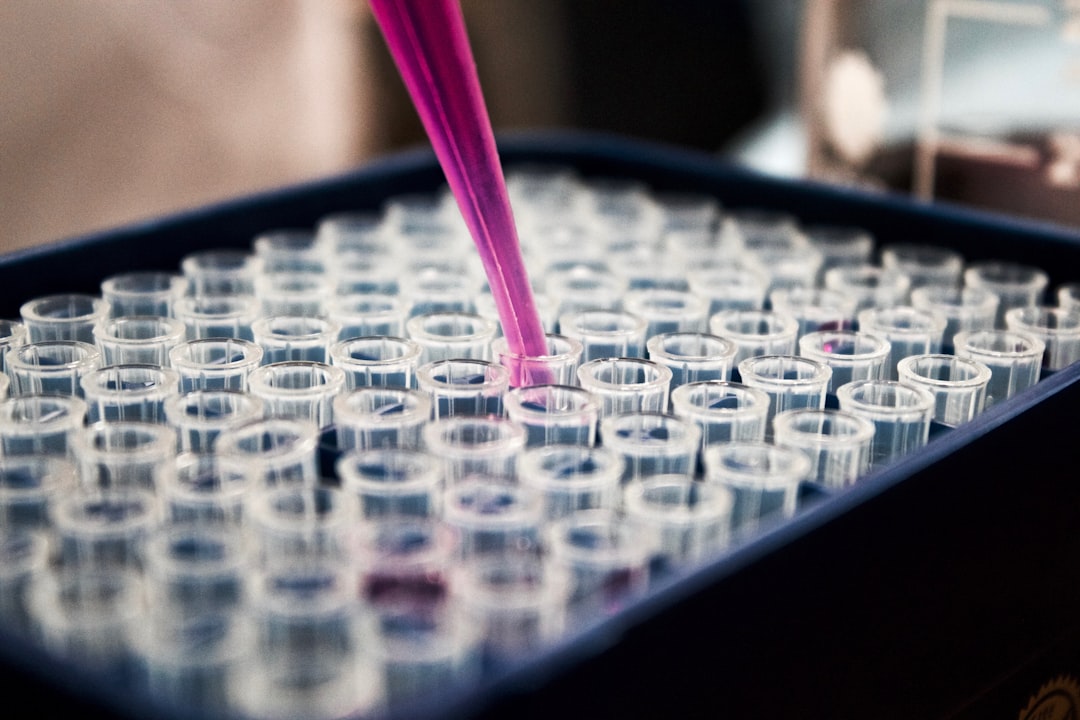Nov. 16, 2020, will forever be seared into the painful folds for the memory of one Beverly Hills mother. Her 37-year-old son, Ray, didn’t show up to pick up his newborn daughter. When they rushed to his nearby home, his body was discovered motionless — his distressed dog licking his lifeless face.
Like that, this mother’s child was gone.
One year sober, Ray had drifted from his virtual Alcoholics Anonymous meetings. Struggling for connection, he suffered a stress-induced relapse and texted an old dealer — someone the mourning mother described as a typical Los Angeles party girl. But one whiff of what he thought was cocaine turned out to be deadly: pure fentanyl.
“This wasn’t even a mix; there was no cocaine in his system. I had no idea about fentanyl until this happened,” said the mother, who requested anonymity given the federal investigation underway by the Drug Enforcement Agency. “The most important thing now is for everyone to know there is no safe drug. It can happen with any drug, at any age or any amount of use. Now is no time to experiment.”

Unfortunately, this grief-stricken mother’s story is hardly unique. More than one hundred thousand Americans die of opioid overdose – more accurately termed “poisoning” – linked to the chilling surge in fentanyl now found in everything from street drugs to black market pharmaceutical products. It’s highly addictive; even the tiniest trace – equivalent to a few grains of salt – can kill. Thus, our country is now grappling with an epidemic that is only bound to become exponentially worse and one with a long trail to chase.
Let’s begin where the deadly synthetic, once a lauded medical-grade painkiller now one hundred times more potent than morphine, begins: The People’s Republic of China (PRC). From nondescript buildings in the industrial nucleus of Wuhan, across wavy seas to dusty tented super laboratories in the heart of Mexico, and then across the jagged southwest border and dispersing like a wild bomb ripping through every crevice of the United States, the growing presence of Chinese drug lords and cartels below the southern border is one that is killing an unprecedented amount of Americans.
Ultimately, fentanyl market dynamics have proven impossible to disrupt. One glaring problem is that many precursor chemicals made in China are also used in legitimate pharmaceuticals making the matter challenging to isolate. The precursor chemicals needed to make fentanyl stem from labs in China and are funneled directly to Mexican cartels. Professional gangs are responsible for the export of goods to Mexico. China’s power players have been adept at utilizing legal companies and frameworks for the trade to keep business thriving.
Much of the precursor development can be traced back to the “Los Zheng” wing, which has a presence in the PRC and on Mexico soil – operatives have even been busted and indicted in U.S. terrain in recent years.
Based in Shanghai, the leading father-and-son Zheng team runs a fentanyl laboratory under the alias “Gordon Jin.” A grand jury in the United States charged the two kingpins almost five years ago. Nevertheless, the Zhengs continue to have free reign in their homeland. Making matters more complicated, the Los Zheng lab – along with the many others dominating the fentanyl space – functions during the day as legitimate pharmaceutical and biotechnology companies are used as “fronts” or as a blurring between legal and illegal missions.
The products reach Mexico via sea and land under the guise of various “shell companies” that offer anything from veterinary services and clothing sales to clinical laboratories and maintenance of computer systems in Mexico. The ports of Lázaro Cárdenas, Michoacán, Manzanillo Colima in Mexico and Ensenada Baja, Calif., are primarily used to usher in questionable and bonafide commercial products.
Essentially, these importers have exploited Mexico’s state of corruption and the cartel prowess over the government to earn the well-funded collaboration of customs authorities and members of the Sinaloa and Jalisco Nueva Generación cartels in Mexico.
Chinese nationals involved in the precursor moving process typically maneuver through Mexico’s southern border with Guatemala at Frontera Corozal, in the state of Chiapas, into Tapachula, where there is a sizable ethnic Chinese community, and then travel by train to the Atlantic coast through territory controlled by Los Zetas. Others arrive directly from Asia, transferring through ports at Manzanillo or Puerto Vallarta in Jalisco. Some even touch down directly in Mexico City.
Well-placed sources on the inside explain that those connected to the organized crime outfit in China have a presence in Mexico and the U.S., mainly overseeing the financial exchange side of the close arrangement.
“Fentanyl’s availability and cheapness, along with the ease of making it means the cartels can be (cook it) quickly and in large quantities once the precursors are received,” one source closely connected to operations says. “The cat is out of the bag and will not be leashed.”
The money exchange takes place via the vast network of Chinese underground banks.
“What happens is there is a system where there are Chinese couriers who are clean skinned, meaning they have no criminal history, they’re not criminals to the outside are in charge of the money flow,” notes a former drug-running operative connected to the operations. “Many such individuals are connected to legitimate businesses in the United States, and they wire that money from their legitimate American business to a subsidiary in Mexico.”
When the Mexican subsidiary receives the money, the designated operatives deposit the funds into Chinese internal bank accounts inside the Chinese banking system. So, the money enters the Chinese banking system, thereby not touching any American authority. And then what ends up happening is the courier uses a debit card assigned to this Chinese account, and then it is withdrawn in Mexico.
Multiple sources also concurred that money launders shuffling funds from cartels to Chinese nationals also rely heavily on encrypted and banking apps.
And in terms of who in Mexico monopolizes the multi-billion-dollar business of cooking the precursors in crude labs to morph them into hard-hitting drugs that make their way up through their northern border, authorities point the finger at the Sinaloa cartel, seconded by the New Generation Jalisco (Cártel de Jalisco Nueva Generación or CJNG) cartel. Traffickers propel fentanyl into the U.S. via Mexico routes connecting to California and Arizona. Thus, drugs passing through these areas would need to be approved by the organizations that control such passages.
Fentanyl production is more straightforward than heroin because it is entirely synthetic and doesn’t require cultivating the poppies needed for heroin. As a result, busts of Mexican labs or large seizures at the border can be quickly offset by new batches without having to wait to harvest crops or pay farmers. Further, for at least the past three years, cartels have purchased pill presses from the Chinese to produce counterfeit oxycodone pills sold as Mexi Oxi/M30 pills or the Blue Mexi 30s to customers all over America. Chillingly, users around America have no idea what they are taking when they ingest these counterfeit pills, and in many cases, they are dying from fentanyl poisoning.
Once inside the U.S., the deadly drugs are distributed through a vast array of family-structured cartels and street gangs of every stripe into every U.S. state, given the high demand in almost every inch of the nation.
Nevertheless, authorities indicate that the flow of fentanyl at the behest of Mexican transnational criminal organizations (TCOs) into the U.S. continues diversifying in ways never imagined when the crisis first emerged in 2014. According to the U.S. Drug Enforcement Administration (DEA), “new source countries and new transit countries (are) emerging as significant trafficking nodes.”
“This is exacerbating the already multi-faceted fentanyl crisis by introducing additional source countries into the global supply chain of fentanyl, fentanyl-related substances, and fentanyl precursors. Further, this complicates law enforcement operations and policy efforts to stem the flow of fentanyl into the United States,” the DEA stated. “While Mexico and China are the primary source countries for fentanyl and fentanyl-related substances trafficked directly into the United States, India is emerging as a source for finished fentanyl powder and fentanyl precursor chemicals.”
As one inside source detailed, because of the spiraling crisis and the pressure put on Chinese authorities to act, cartels are setting sights on developing connections with the next biggest pharmaceutical supplier: India.
“There has been a crackdown on precursors in China, which has also prompted China and cartel alliances to move some operations to Central America, Costa Rica and Panama to move away from the known cartel-controlled ports in Mexico to avoid interception,” the source continues. “And there are known incidences of cartels making contact with Indian pharmaceuticals, but I haven’t seen any evidence of cooperation – yet.”
However, DEA reporting has pointed to at least one Indian national linked to Sinaloa supplying the outfit with fentanyl precursor chemicals, NPP and ANPP, after which a Chinese national also affiliated with the Sinaloa Cartel would synthesize the fentanyl and traffic it from India to Mexico.
It may already be possible for China-based traffickers to circumvent China’s new fentanyl controls by working with Indian nationals to traffic fentanyl and fentanyl precursor from India to TCOs in Mexico or direct to the United States.
And this means the crisis will worsen before it becomes any better. Authorities caution that the flow of fentanyl to the United States in the near future will probably continue to be diversified, and that the emergence of India as a precursor chemical and fentanyl supplier could make the matter even harder to curb.
“Mexican TCOs are likely poised to take a larger role in both the production and the supply of fentanyl and fentanyl-containing illicit pills to the United States, especially if China’s proposed regulations and enforcement protocols are implemented effectively,” the DEA warns. “Fentanyl production and precursor chemical sourcing may also expand beyond the currently identified countries as fentanyl lacks the geographic source boundaries of heroin and cocaine as these must be produced from plant-based materials.”
PLEASE CONSIDER A PAID SUBSCRIPTION TO THIS SUBSTACK TO HELP KEEP INDEPENDENT, AGENDA-FREE WRITING AND JOURNALISM ALIVE. THANK YOU SO MUCH FOR YOUR SUPPORT.
For speaking queries please contact meta@metaspeakers.org
I am also available for a select number of private coaching sessions for those wishing to write a book or venture into the foreign journalism space. Please contact directly for rates hollie@holliemckay.com
Follow me on Instagram and Twitter for more updates
HOLLIE’S BOOKS
** Short read of meaningful lessons gleaned from the ordinary forced to become extraordinary
Order your copy of “Afghanistan: The End of the US Footprint and the Rise of the Taliban Rule” due out this fall.
For those interested in learning more about the aftermath of war, please pick up a copy of my book “Only Cry for the Living: Memos from Inside the ISIS Battlefield.”
If you want to support small businesses:














